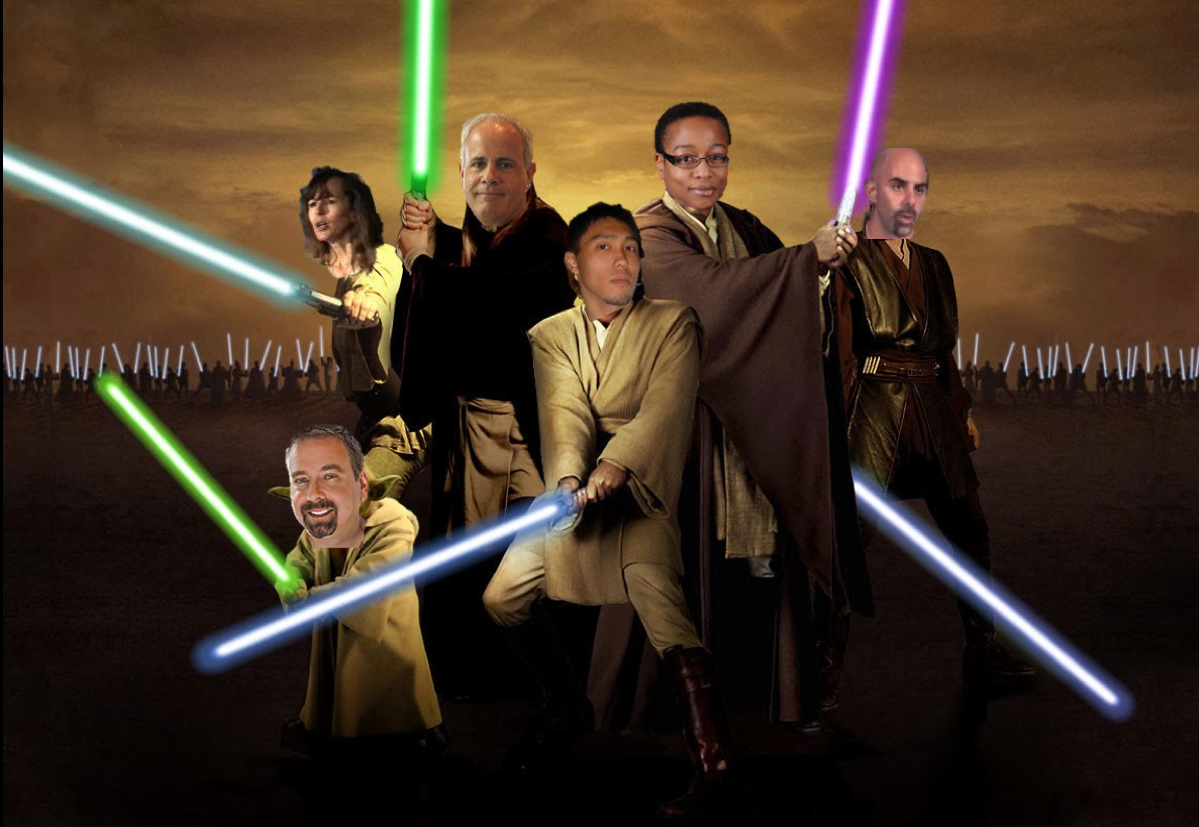Featured Image Credit: HASTAC-DML on flickr
It’s been about a week since I first received the email confirming my acceptance into the 2017-19 HASTAC Scholars cohort. It seems like a huge blur of excitement between this and the many other things happening with doctoral candidacy, though a very welcome one. Before letting my head get any further though, I wanted to pause, take a breath, and briefly share some thoughts on what I’ve learned in just a week of browsing HASTAC content, connecting with colleagues on Twitter, and learning from the great examples of those who have come before us. Here are just a few of these ongoing realizations.
1. Amazing work is happening everywhere.

This is what innovators look like! (Credit: Danica Savonick and the HASTAC Race & Gender Theory Group)
Between Connected Learning Hackathon sessions, scholarship at the intersection of Black Studies, Afrofuturism, radical media, and the digital humanities, and practical toolkits for educators interested in teaching Race & Gender Theory, HASTAC members seem to be pushing the boundaries and possibilities for collaborative, interdisciplinary scholarship in a digital age. And while ‘innovation’ may be start to feel like another buzzword losing its meaning, HASTAC veterans appear to be confident and comfortable leading from the front and defining this area through concrete work and critical reflection.
2. The fight for representation has an important, digital front.
Research research has confirmed a kind of apartheid with regard to the representation of people of color in children’s books.
Illustration ©2016 David Huyck, in consultation with Sarah Park Dahlen and Molly Beth Griffin
Beyond print literature, however, these issues span the entire realm of popular media, with particularly heated debates entering the digital space.
A recent Twitter exchange between John Boyega and a commenter who accused him of failing to call out the “lack of diversity” in the upcoming Black Panther film may help illustrate this tension.
Hey @JohnBoyega, why aren’t complaining about the lack of diversity of Black Panther’s cast ? 9/10 actors are Africans/Afro-Americans
— Moi (@Risitas3_1825) October 17, 2017
Because it’s about time Biiiihhhhh
— John Boyega (@JohnBoyega) October 17, 2017
We may celebrate the fact (as I do every day) that Boyega’s quick response has garnered over 13,000 likes and 4000+ retweets. But looking closely at Moi@Risitas3’s original post reveals some importance nuances in debates around diversity and representation. My take on it goes something like this:
If we believe, as the OP seems to, that “diversity” is the main issue here, then we might seek to address it, as we have in the past, through token characters and cultural fetishizing. However, if we shift our focus on issues of representation, as in, the ways that social, cultural, historical and intersectional identities are represented, then issues of representation and inclusion in the media may be even more pressing and essential to address. And in that sense, it’s actually work such as Black Panther, the Wachowski’s Sense8, and Anzari and Yang’s Master of None that are setting the example.
Bringing these debates back to the classroom, work by HASTAC scholars like Kylie Korsnack reminds us to stay critical about the pedagogical possibilities of representationally controversial media.
3. Fresh inspiration mean new lenses for looking at our own work.
As a former high school English at nearing the finish line of a doctorate in education, there isn’t a minute that goes by that I don’t miss the days spent with young students in my classroom. And after 3 years working alongside and learning from some of the brightest and most accomplished folks in education, its tempting to keep on looking at the world through lenses that I’ve gotten used to.

Some of the biggest influences on my teaching, research, and writing. How could I see the world any other way?
On the other hand, having gone over the edge from Digital Humanities-curious to realizing how adjacent this work is to my own, it’s been amazing to see how new perspectives on counts as literacy in a digital age have been changing the ways I look at my own work in the field. Shout to Greg Palermo and Kalle Westerling for tuning me in to these resources. I can’t help but be deeply thankful for these new ways of seeing.
Beyond the Honeymoon Phase
I get that it’s common to be overwhelmed with feelings of excitement and enthusiasm in the early stages of any relationship, project, or partnership. But sometimes, a little boost of positivity is just what we need to get the ball rolling on a new effort.

If these early days are any indication of things to come, then I’m looking forward to seeing the good work we’ll do together.
So what do you want to see us do?
Whether you’re a fellow HASTAC Scholar, veteran of the group, or just stopping by to visit, I’d love to hear your thoughts and ideas about what we can work on together.

